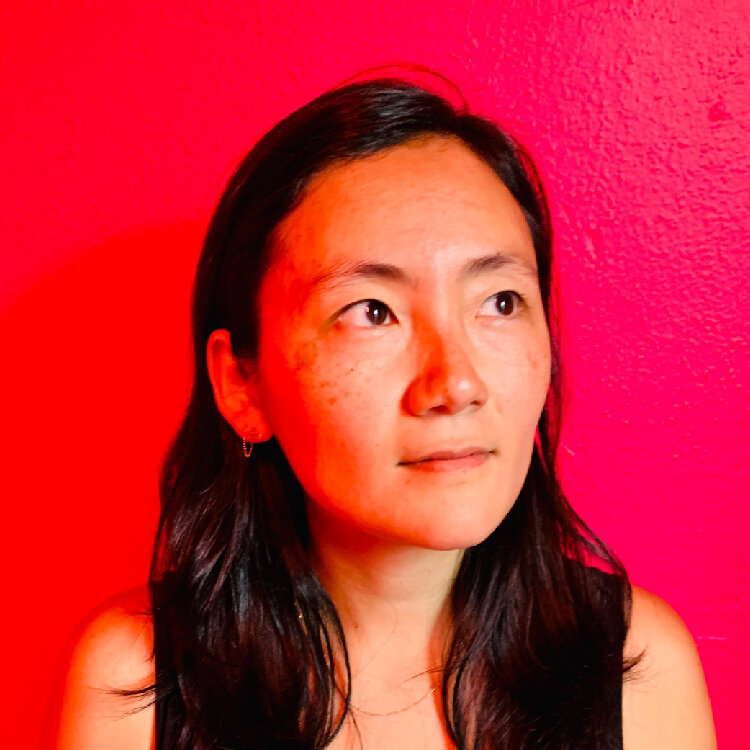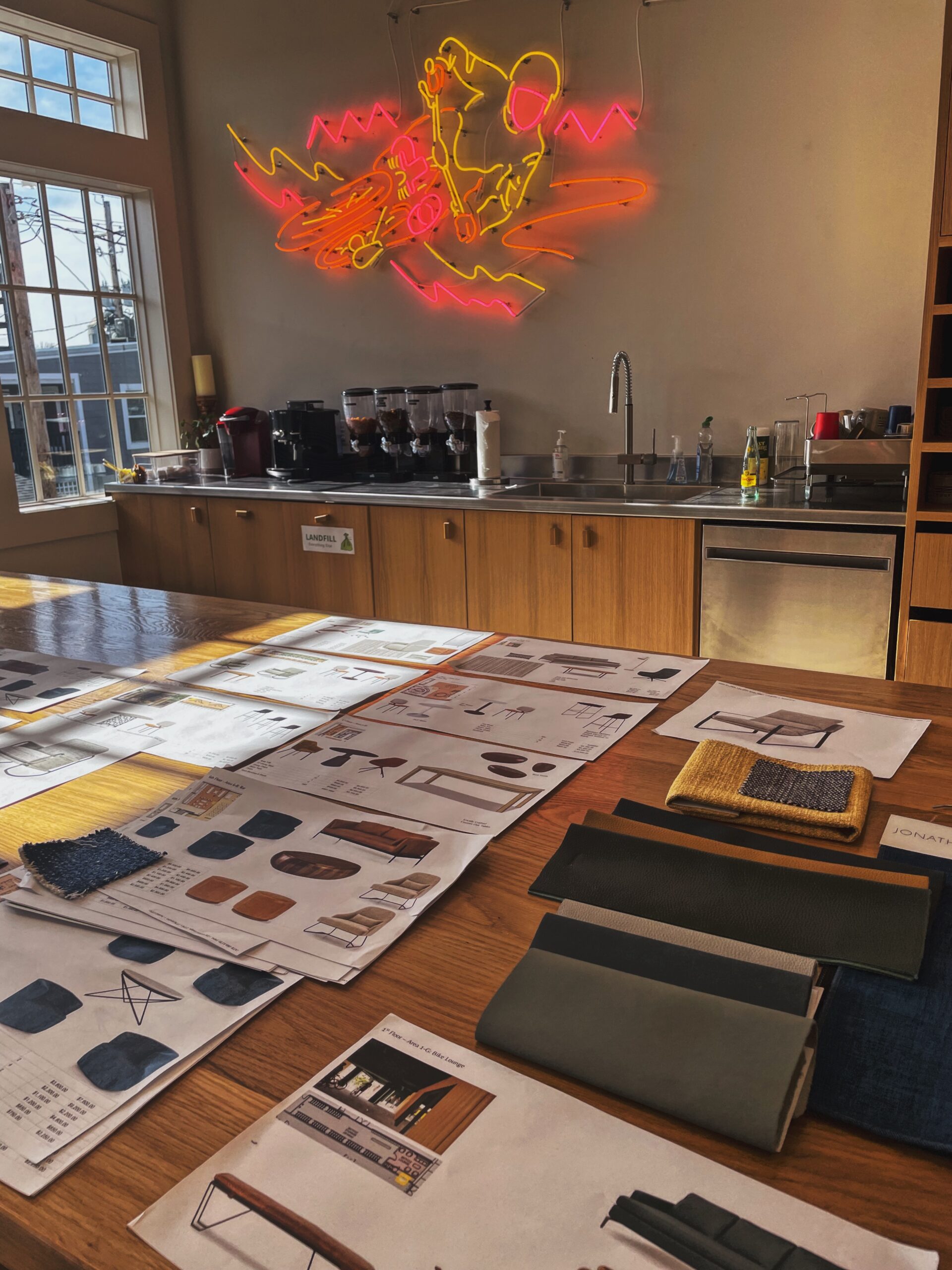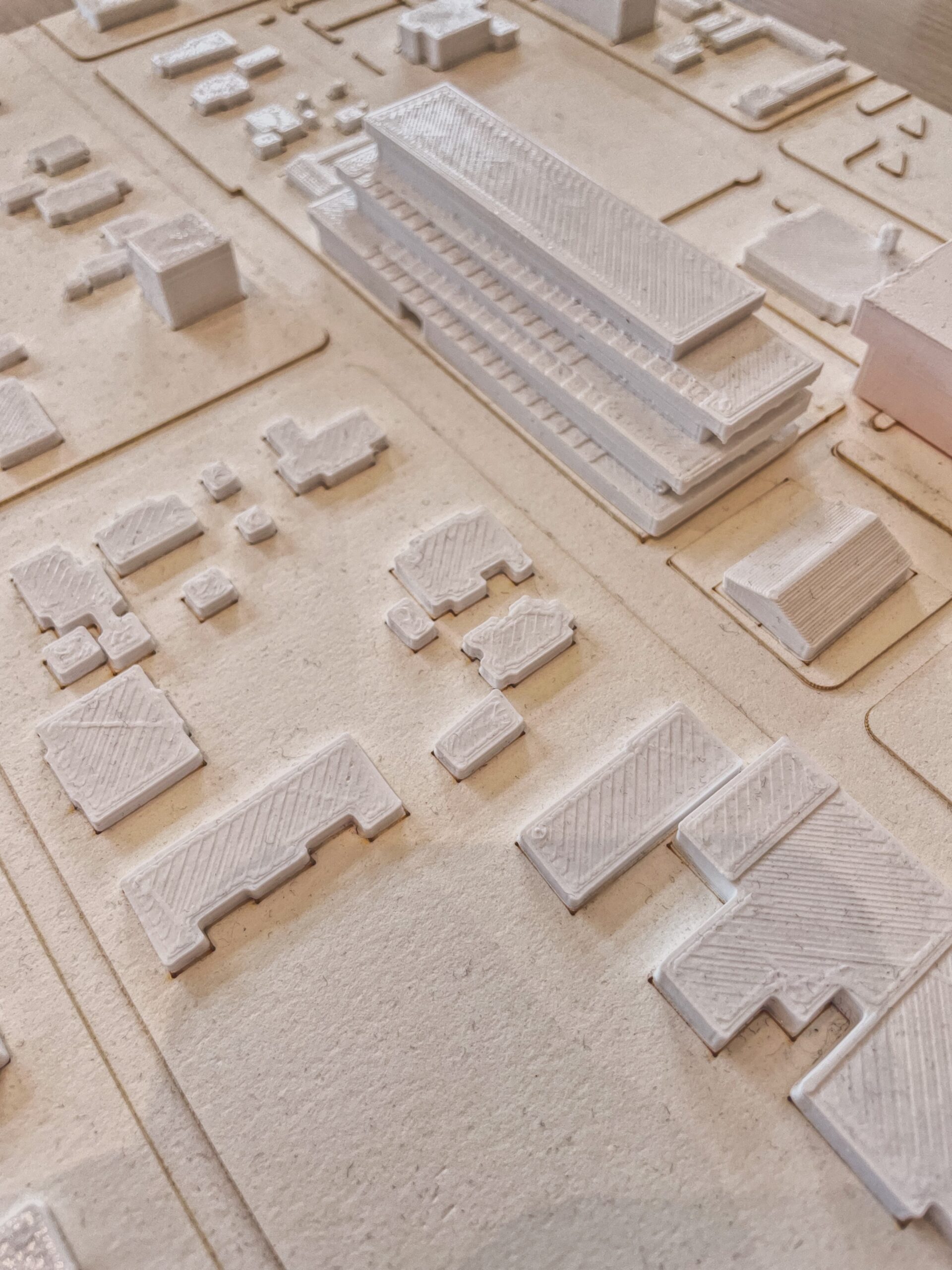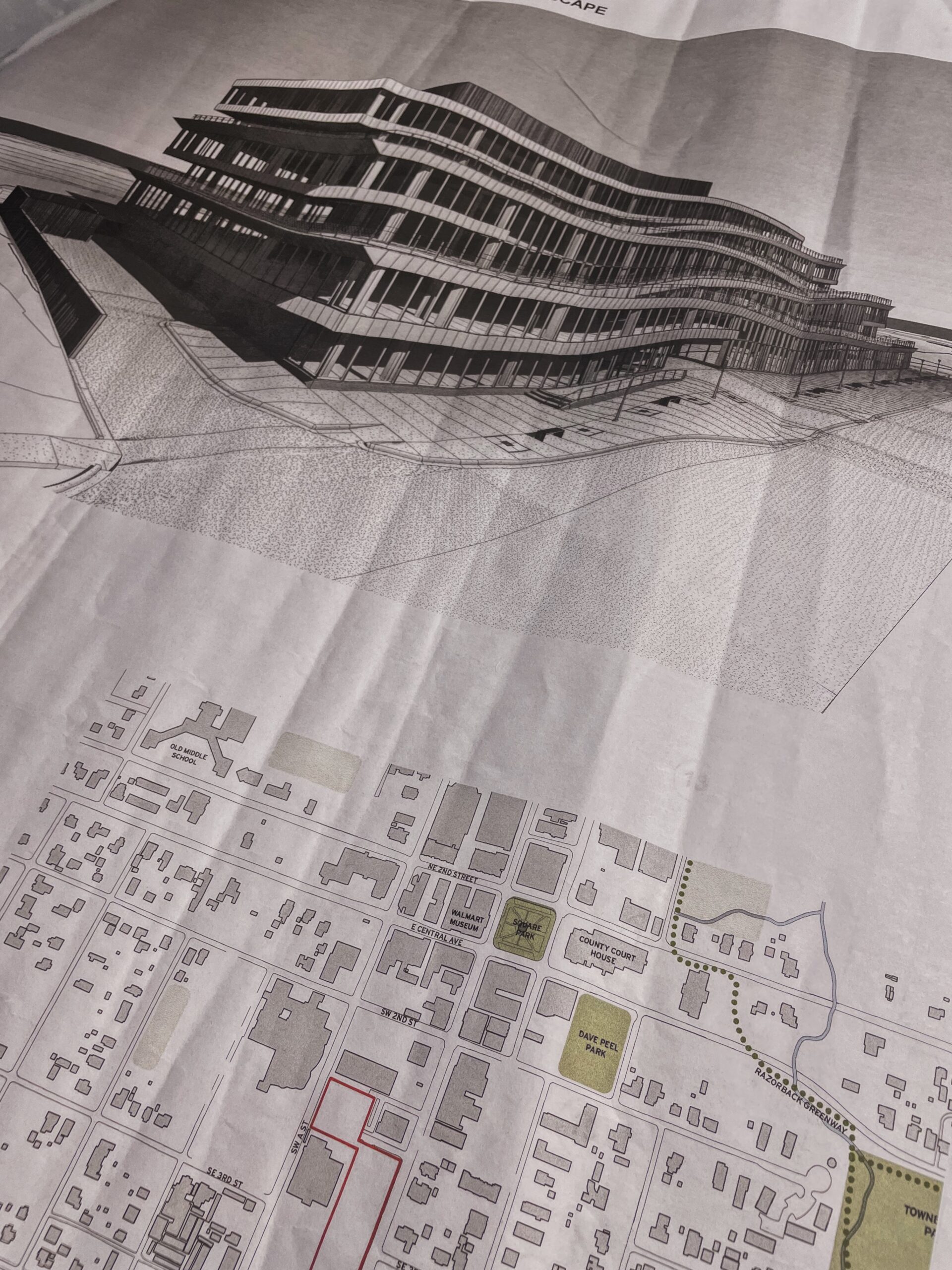Welcome to the first installment of Ledger Stories, a series dedicated to highlighting the amazing human beings who make this project possible. Pulling off a building like Ledger requires incredible minds and big hearts. We’re proud to say every member of our team is as passionate about the Bentonville community as they are about the quality of their work.
To kick things off, we chatted with architects Christian Callaghan and Haruka Horiuchi, part of the core and shell design team for Ledger. They’re also bringing our interiors to life with human-centered design.
With over 25 years of combined experience, Callaghan and Horiuchi have worked on numerous large scale projects around the globe, including university campuses, resorts, and multi-use towers. You can check out some of their past projects on their website.


In our conversation, we wanted to learn more about how they approach architecture and design, their thoughts on how Ledger fits into Downtown Bentonville, and what excites them about this project.
Tell us about your role in this project.
We started with this project on the Core & Shell design team, which is an architectural collaboration between Michel Rojkind, Marlon Blackwell Architects, and Callaghan Horiuchi. We have continued into the interiors of the project as design architects and design managers.
What excites you most about this project?
The ramp!
How do you envision Ledger evolving over time?
CC: I see Ledger becoming an integral part of the community fabric of Bentonville. The spaces within (and outside of!) the building are designed for people to come together as well as focus and get work done. This makes the building capable of adapting to the vibrant culture of Bentonville and its needs. I can’t wait to see how people interact with the building as well as the amazing work, art, and events that result from this interaction.
Explain what human-centered design means for Ledger.
HH: For Ledger, it means that every aspect of the building has been designed from the perspective of real humans occupying the environment. We try to think through the lens of the different types of end users, their respective needs, and how to best support them through the design of the built environment.
It also means that we’ve spent a good deal of time thinking through the right level of flexibility to provide in the environment itself—it’s important that the users feel a sense of agency and ownership of their spaces, and can take action upon and within their environment in a meaningful way.

How does your background influence the design of Ledger?
CC: I started my career as a mechanical engineer designing building systems. This background keeps me mindful of the requirements of building systems and the impacts they could have on design. So when we first started designing, I made sure everyone was at the table to share ideas and collaborate on how to design this building. And the results speak for themselves.
HH: My early background in brain and cognitive science has helped shape how I approach human-centered design at Ledger, think through how humans perceive and process their environment, and apply that to the creation of spaces and experiences.
Has Ledger’s Bentonville location impacted the design? How so?
CC: Yes, of course both at a community and site scale. First, from a community standpoint the building design was heavily influenced by biking and the community’s love of the outdoors. The ramps help to integrate this theme into the building. An occupant can bike to work or simply take a stroll up and down the ramp while taking a call (all while not leaving their workplace).
And then at a site level we created access from Main Street to one of the future parks within the Quilt of Parks network via a breezeway through the middle of the building. This helps to connect other community-wide projects within Bentonville and integrates the building into these efforts.
We feel the breezeway will become a key element in many outdoor events. What better way to start or finish a race than coming through the breezeway and into the park?


On your site, in big bold letters, you say you’re passionate about getting things built. Why is this important to you? How does this impact your process?
HH: It’s important to get buildings built! We strongly believe that architecture is something that needs to exist in the real world—outside of computers and sheets of paper. Until you can see and feel a space—live and breathe in it—you can’t really judge its success. The work, to us, doesn’t mean much until humans can occupy it. Once humans can occupy it, you can learn from it.
There’s a lot of collaboration and energy behind Ledger. What’s your experience been like? What excites you about this team?
CC: This has been an incredible collaborative effort. I have been most impressed with the respect, experience, and pride that each team member has in themselves and their peers. A great example of this are the mosaic critters. The team translated beautiful illustrations into mosaics that will be embedded into the concrete ramps. This hasn’t been done before and took the collective knowledge of many professionals to accomplish.
Honestly, and this is the engineer talking, one thing that really excites me is seeing the care that the construction team is putting into the work. Some of the conduit routing looks like custom pipes for a Harley Davidson.
HH: The collaborative effort throughout the process—from design to construction to ownership—has been amazing. Everyone has put their best efforts forward, with the collective interest of a successful project as the overarching goal. It has been incredibly rewarding and inspiring to be a part of the Ledger team.
What do you hope people feel/experience when visiting or working at Ledger?
CC: Some of these words may seem contradictory, but I hope that people feel excited, comfortable, and adventurous. And I hope their experiences keep them energized and feeling productive. The building contains many unique work environments and I hope that people explore and use these spaces throughout the day.
HH: The building from the inside out is envisioned to embrace and encourage movement and human interaction, so I hope that people will feel an inherent sense of dynamism and energy when working at Ledger.
Final Thoughts
We couldn’t be more thankful for the incredible thought leadership and experience Christian and Haruka bring to this project! If you enjoyed this conversation, share it with your friends and follow along for more Ledger Stories.

